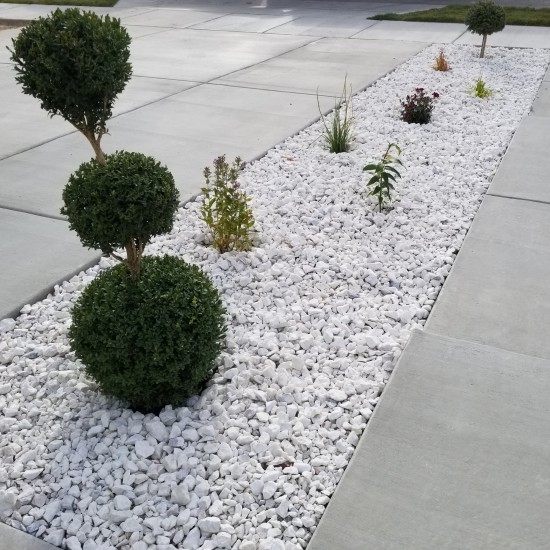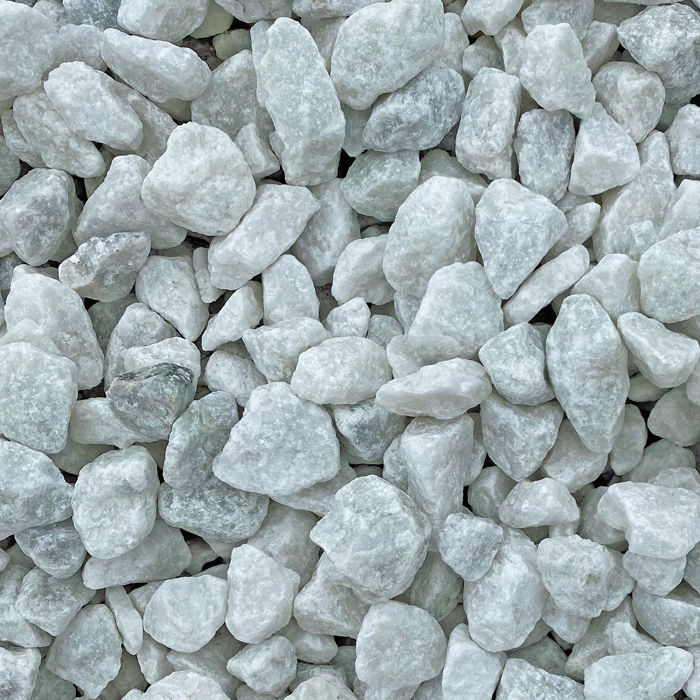When it comes to landscaping and home decor, few elements offer as much versatility and aesthetic appeal as decorative white rocks. They are not just a functional addition to your garden; they also bring a touch of elegance and sophistication. In this comprehensive guide, we’ll delve into everything you need to know about decorative white rocks, from their types and uses to installation tips and maintenance advice. Join me as we explore the beauty of these stunning stones!
Understanding Decorative White Rocks
Decorative white rocks come in various shapes, sizes, and textures, making them an ideal choice for both outdoor and indoor projects. These stones can instantly enhance the visual appeal of any space, providing a clean and crisp look. With their natural charm, white rocks can be used in a multitude of ways, from creating pathways to accentuating garden features.
Types of Decorative White Rocks
Before we dive into their uses, let’s explore the different types of decorative white rocks available. Here’s a breakdown:

| Type of Rock | Description | Best Uses |
|---|---|---|
| Marble Chips | Small, polished stones known for their brightness and beauty. | Paths, flower beds, and decorative accents. |
| White Quartz | Crushed stones that are durable and sparkling, reflecting light beautifully. | Landscaping, aquariums, and as mulch. |
| Calcite Rocks | Natural stone that is softer and often used in crafting. | Sculptures, borders, and garden features. |
| Pearl Stone | Round, smooth stones that have a high-gloss finish. | Decorative pots, indoor decor, and pathways. |
Choosing the Right Decorative White Rock for Your Project

When selecting decorative white rocks, consider the following factors:
- Purpose: What will you use them for—landscaping, indoor decor, or as a base for planters?
- Size and Scale: Make sure the size of the rocks fits well within your design scheme.
- Color Variation: Some types of white rocks have subtle color variations that can add depth and interest.
- Budget: Prices can vary significantly, so be sure to choose options that fit your financial plan.

The Versatile Uses of Decorative White Rocks
Decorative white rocks can transform any area into a stunning landscape or an elegant indoor space. Here are some creative uses:

1. Landscaping
White rocks are ideal for creating beautiful landscapes. Here are some specific ideas:
- Pathways: Lay down white gravel or larger stones to create striking paths that guide you through your garden.
- Rock Gardens: Combine various sizes of white rocks with plants to create a stunning rock garden that is low-maintenance.
- Ground Cover: Use white stones as ground cover to suppress weeds and retain soil moisture.

2. Indoor Decor
White rocks can also enhance your home’s interior. Consider these options:
- Vases and Centerpieces: Fill clear vases with decorative white rocks for a chic centerpiece.
- Terrariums: Use white pebbles in terrariums to create contrast against greenery.
- Fireplaces: Sprinkle white stones around fire pits or fireplaces for a stylish finish.

3. Water Features
If you have a pond or fountain, white rocks can play a significant role:
- Edging: Use white stones to edge water features, giving a clean look.
- Mulch: For aquaponics or fish ponds, white pebbles can serve as a safe mulch.

Installation Tips for Decorative White Rocks
Installing decorative white rocks is a straightforward process, but here are some tips to ensure a clean and appealing finish:
1. Preparation of the Area
Before you begin, prepare the area by clearing any grass, weeds, or debris. Consider using landscape fabric to prevent weed growth.
2. Choosing the Right Thickness
For paths and ground cover, a thickness of 2-3 inches is recommended. This will provide effective weed suppression while allowing drainage.
3. Edging Your Rocks
Using edging materials around your white rocks can help keep them in place and prevent them from spreading into your garden.
Maintaining Your Decorative White Rocks
Maintaining the beauty of your decorative white rocks is crucial. Here are some maintenance tips:
1. Regular Cleaning
Over time, dirt and debris can build up. A quick rinse with water will keep your rocks looking fresh. For stubborn stains, a soft brush may be needed.
2. Replenishing Rocks
Depending on your use and exposure to the elements, some rocks may become dislodged. Regularly check and replenish as needed.
3. Weed Control
Even with landscape fabric, some persistent weeds may pop through. Use a hand weeder or herbicide as necessary.
Pros and Cons of Decorative White Rocks
As with any design choice, decorative white rocks come with their own set of advantages and disadvantages. Let’s explore:
Pros
- Low Maintenance: They require minimal upkeep compared to living plants.
- Drought Resistant: Great for xeriscaping gardens where water conservation is key.
- Aesthetically Pleasing: They offer a timeless elegance and can brighten dark spaces.
- Versatile: Suitable for various design styles, from modern to rustic.
Cons
- Heat Retention: White rocks can absorb heat, making them hot to the touch under the sun.
- Slippery Surface: Rain can make them slippery, so caution is needed if used in pathways.
- Cost: Some varieties can be more expensive than traditional mulch or soil options.
FAQs About Decorative White Rocks
What types of decorative white rocks are best for a garden?
Marble chips and white quartz are popular choices for gardens due to their aesthetic appeal and durability.
Can I use decorative white rocks in an aquarium?
Yes, but make sure to choose fish-safe options, such as white quartz or specific aquarium-grade gravel.
How do I prevent weeds from growing through white rocks?
Using landscape fabric beneath the rocks can significantly reduce weed growth.
Are decorative white rocks suitable for driveways?
While they can be used, larger stones are often preferred for driveways due to their durability.
How often should I clean my decorative white rocks?
Cleaning them once every few months is usually sufficient, but high-traffic areas might require more frequent cleaning.
Conclusion
Decorative white rocks are more than just a landscaping choice; they represent a stylish and functional element that can enhance the beauty of your space. Whether you are creating an elegant garden pathway or a chic centerpiece indoors, white rocks offer endless possibilities. With the right selection, installation, and maintenance, you can enjoy the timeless beauty that these stones bring to your environment.